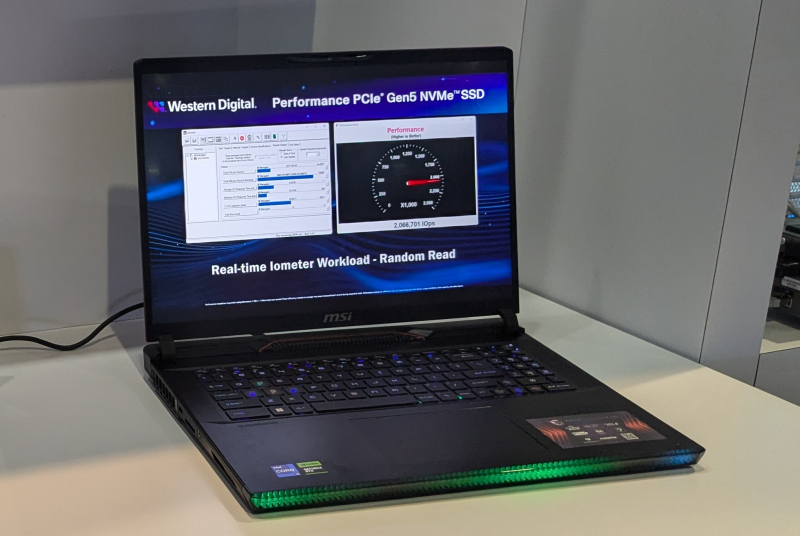Western Digital at its The Future of Memory and Storage exhibition showed new models of solid-state drives of the M.2 2280 form factor with a PCIe 5.0 x4 interface for mobile workstations and consumer desktop PCs. The new products do not yet have a name, but they stand out not only for their high performance, but also for their high energy efficiency.

Image source: AnandTech
The first PCIe 5.0 drive models used slower NAND flash memory, so they were limited to speeds of up to 12.5 GB/s. However, today’s most advanced SSD models are equipped with 232-layer Micron 3D TLC flash memory chips with speeds of 2400 MT/s per pin, whose overall sequential read speed exceeds 14 GB/s. Over the past year, Western Digital has been focused on releasing consumer SSD models in more mainstream segments for the PCIe 4.0 interface (WD Blue SN5000, WD Black SN770M, and WD Blue SN580 series). Now the manufacturer plans to expand its portfolio of drives with new high-performance models with PCIe 5.0 support.

The company is preparing to release two SSD M.2 2280 models: one will be aimed at the upper segment, the other at the mass market. Both models are based on new proprietary controllers. The flagship SSD model received an 8-channel controller with DRAM cache memory. The mass-segment model is equipped with a four-channel controller without DRAM cache. Both drives use 218-layer 3D TLC NAND BiCS8 flash memory chips.

The key feature of the new products, as the manufacturer notes, is not only high performance, but also energy efficiency, which entails low operating temperatures. For the flagship model, the company promises power consumption under load of only 7 W, and for the mass model – 5 W. For comparison, existing flagship PCIe 5.0 SSD models consume up to 11-12 W under load.

Western Digital has shown that the performance segment model is capable of delivering sequential read speeds of nearly 15 GB/s and random read performance in excess of 2 million IOPS. In turn, the mass segment SSD model provides a sequential read speed of 10.7 GB/s.

While Western Digital has been a bit late in releasing its own PCIe 5.0 SSDs compared to its competitors, this demonstration of solutions using proprietary controllers and NAND memory chips shows that it is not far behind in terms of technology.